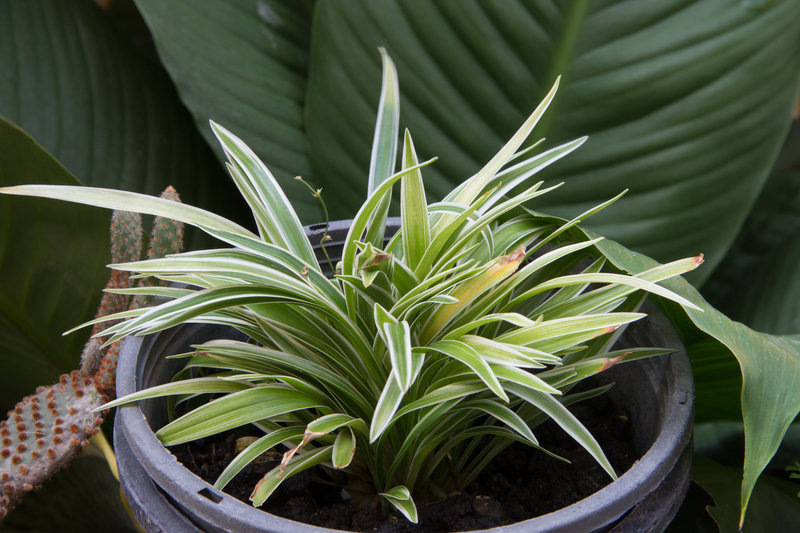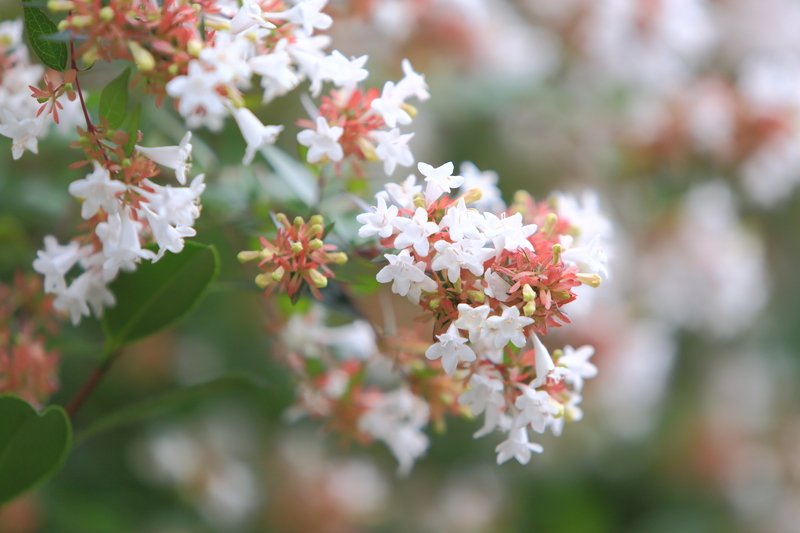Discover the art of peace with Zen garden designs
Posted on 01/06/2025

Discover the Art of Peace with Zen Garden Designs
Cultivating tranquility and mindfulness is an essential part of modern living. One timeless way to achieve this is through Zen garden designs. These enchanting outdoor (and indoor) spaces do more than simply beautify--they serve as living art, encouraging deep contemplation and reducing daily stress.
In this guide, we'll explore the art of peace with Zen garden designs, unraveling their history, core principles, types, and how you can create your own peaceful retreat, no matter your available space or budget.
- The Origins and Philosophy of Zen Gardens
- Core Elements of a Zen Garden
- Different Types of Zen Garden Designs
- How to Create Your Own Zen Garden
- Selecting Plants for Peaceful Harmony
- Benefits of Embracing Zen Garden Design
- Simple Maintenance Tips for Serenity
- Conclusion: Embody Calmness with Zen Garden Aesthetics
The Origins and Philosophy of Zen Gardens
The allure of Zen garden designs traces back centuries. Known in Japanese as karesansui, or "dry landscape garden," these tranquil spaces are rooted in Buddhist concepts of simplicity, meditation, and oneness with nature.
Evolution of Japanese Zen Gardens
Zen gardens began in ancient Japan (approximately the 13th century) within Buddhist monasteries. Monks shaped the gravel, stones, and minimal vegetation to mirror natural elements--mountains, rivers, and islands--on a smaller, highly symbolic scale. Over time, the art of peace with Zen garden designs became both a meditative practice and a harmonious aesthetic, influencing garden design across the globe.
Philosophy and Symbolism
The core idea behind a Zen landscape is to foster peace, mindfulness, and reflection. Every feature, from moss to rock placement, embodies spiritual principles--impermanence, balance, and serenity.
- Rocks: Represent islands or mountains, anchoring the space.
- Gravel or Sand: Stands for water, raked into wave-like patterns.
- Moss and Plants: Symbolize growth, resilience, and harmony.
Core Elements of a Zen Garden
Establishing the art of peace in landscape design relies on carefully curated features, each chosen for their meaning and visual calmness. Here are the fundamental elements you'll find in classic and modern Zen gardens:
1. Stones and Boulders
The "bones" of the garden, stones are thoughtfully positioned to give structure. Their unique shapes and placements represent natural landscapes or philosophical ideas.
2. Gravel and Sand
Graveled areas, meticulously raked into ripples and patterns, evoke the presence of water--often symbolizing the endless flow of life and thought. This act of raking can be deeply meditative, promoting peace.
3. Plants and Moss
Minimal greenery is used for accent--think moss, Japanese maples, bamboo, and carefully pruned shrubs. These add color and softness while upholding the theme of restraint.
4. Bridges, Lanterns, and Water Features
- Stone lanterns: Guide visitors and create points of interest.
- Stepping stones: Encourage slow, thoughtful movement.
- Water basins or gentle streams: Sometimes included to provide the soothing sound of water, amplifying the sense of tranquility.
Different Types of Zen Garden Designs
Zen garden layouts evolve to suit available space, climate, and lifestyle. Here are the most beloved forms:
- Traditional Karesansui (Dry Landscape) Gardens: Classically found in temples, comprised mainly of rocks, gravel, and minimal plants.
- Strolling Zen Gardens (Kaihu-style): Intended for walking meditation, incorporating paths, ponds, and bridges.
- Courtyard Zen Gardens: Compact versions for urban environments, often indoors or in small patio spaces.
- Modern or Minimalist Zen Gardens: Blends traditional elements with contemporary landscaping, sometimes integrating sculptures or unconventional materials.
- Miniature Tabletop Zen Gardens: Perfect for offices and desks, featuring a meditation tray, sand, small stones, and a mini rake.
How to Create Your Own Zen Garden
Ready to embrace the art of peace with Zen garden designs? Here's a step-by-step blueprint for bringing serenity to your outdoor or indoor space:
Step 1: Choose the Right Location
- Outdoor: Select a quiet, shaded corner of your yard for traditional gardens.
- Indoor: Use a balcony, sunroom, or tabletop to create a compact Zen oasis.
Step 2: Design Layout and Boundaries
- Outline your garden using small fences, bamboo screens, or natural borders.
- Sketch your design, considering rock placements, sand zones, and footpaths.
Step 3: Incorporate Hardscape and Elements
- Set large stones in asymmetrical groupings (odd numbers are preferred for aesthetic balance).
- Spread a layer of fine sand or gravel and rake it into calming patterns.
- Add a water feature, stone lantern, or simple basin for a gentle focal point.
Step 4: Add Minimal Plants
- Choose low-maintenance greenery such as moss, dwarf pine, or ornamental grasses.
- Prune shrubs and trees meticulously to reflect natural yet precise forms.
Step 5: Personalize and Practice Mindfulness
- Include a comfortable bench or meditation cushion.
- Rake sand or gravel regularly, turning it into a mindful ritual.
- *Allow your garden space to evolve over time, maintaining an open mind and Observing the changes in nature*.
Selecting Plants for Peaceful Harmony
The choice of plants in a Zen garden design is essential. Restraint is vital; each plant must harmonize with the landscape, favoring texture and form over color. Here are timeless options:
- Moss: Green carpets of moss create a plush, serene base and thrive in shade.
- Bamboo: Symbolizes strength and flexibility; provides gentle rustling sounds in the wind.
- Japanese Maple: Offers striking foliage and elegant shapes for year-round beauty.
- Ferns: Add a soft, natural look with delicate fronds.
- Dwarf Pines: Miniature trees offer evergreen structure and a sense of permanence.
- Azaleas and Camellias: Introduce subtle seasonal blooms for gentle color contrasts.
Remember, the goal is peaceful harmony, not abundance. Select a few species, and repeat them throughout the landscape for unity and flow.
Benefits of Embracing Zen Garden Design
The rewards of integrating Zen-inspired landscapes extend far beyond aesthetics:
- Stress Reduction: The serene simplicity promotes relaxation and decreases anxiety.
- Meditative Focus: Raking gravel, pruning bonsai, or simply observing the garden enhances mindfulness and clarity.
- Connection with Nature: Regular gardening cultivates appreciation and respect for the environment.
- Low Maintenance: Minimalist plantings and natural materials require less ongoing care.
- Year-Round Appeal: Even when dormant, stones, sand, and evergreens provide beautiful structure.
- Creativity and Personal Expression: Designing your own space fosters creativity and a unique sense of serenity.
Simple Maintenance Tips for Serenity
To keep your Zen garden retreat fresh and inviting, follow these easy-care tips:
- Rake Regularly: Maintain crisp sand or gravel patterns; it's both aesthetic and meditative.
- Prune Wisely: Trim plants often to encourage tidy shapes and prevent overgrowth.
- Remove Debris: Clear fallen leaves or litter swiftly to retain minimalism.
- Refresh Mulch: Periodically add fine gravel or sand to cover spots worn bare.
- Inspect Stonework: Shift stones if they settle, always striving for organic balance.
Conclusion: Embody Calmness with Zen Garden Aesthetics
The art of peace with Zen garden designs offers a timeless oasis amid our busy, noisy world. By combining carefully chosen elements--stones, sand, water, and plant life--you can foster harmony, clarity, and deep tranquility.
Whether you have a sprawling yard, a modest balcony, or even just a desktop to spare, Zen landscaping welcomes you to slow down, breathe deeply, and rediscover the sacred stillness within.
Start your journey today. Create, care for, and contemplate your own Zen garden--and let the art of peace transform your daily life.






